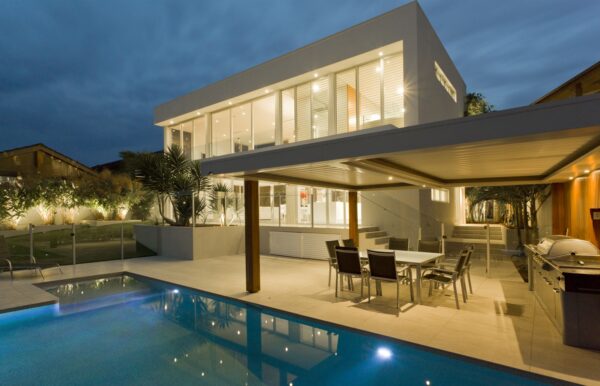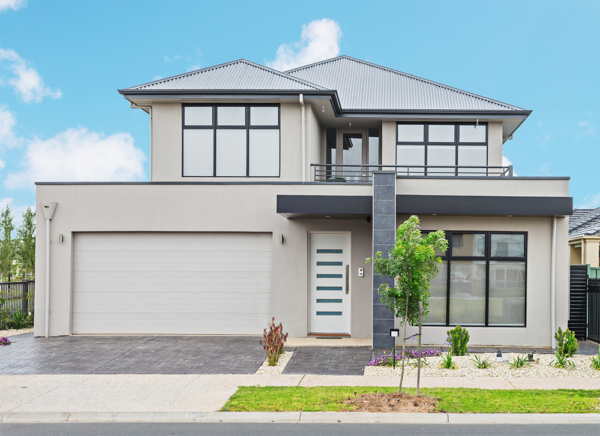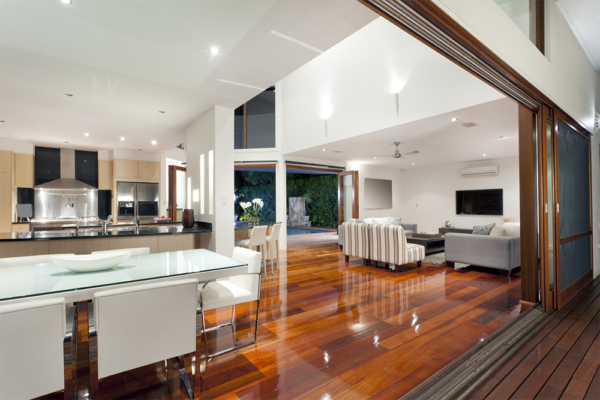You’ve decided that a new custom home is for you but most likely you are going to need a construction loan to finance it. Most larger or mid-tier lenders offer construction loans and essentially, they are no different from requesting a loan to buy an established property, aside from how the funds are released and showing the lender you have funds to cover temporary accommodation.

Affordability of the construction loan
When applying for the construction loan you must be able to demonstrate your ability to repay the loan after the deduction of other ongoing commitments that you have like, living expenses, other personal loan expenses, credit cards or any other ongoing commitments. This ‘passing bar’ is set by the lender. The lender uses a higher ‘servicing rate’ to test the affordability of the loan. This makes sure that if rates do increase, then you should be able to continue to make the loan repayments.
Your temporary accommodation during the construction phase
Another special consideration when you apply for a construction loan is where you and your family are going to reside during the predicted build time. You may need to look for other rental accommodation or if you are lucky, you may be able to stay with family. If you do have planned rental accommodation, then the lender will want to see that you have adequate funds to pay for this. It’s essential you take this expense into account when planning.

What documents are required for the construction loan?
To show that you can afford the loan you will need to present certain income documents and documents to show proof of your other expense commitments. These documents can include, pay slips, tax returns, ATO notice of assessment, loan statements, credit card statements and personal loan statements. You will also need to show that you have your own funds to complete the build. At a minimum, you will need to show a 5% deposit, potentially funds to complete the driveway or access to the property (if this is not in the building contract) and appropriate funds to cover accommodation whilst your home is built. During the draw downs of the construction loan, the loan will be interest only, as lenders know that most families will be paying additional accommodation costs at this time.
How do I know how much I can borrow?
It is usually best to work with a qualified mortgage broker or a trusted contact within the Bank. Remember, you may be working with this person for a few months, as you discuss your borrowing capacity, and final documents that are required and during the draw downs of the loan funds, so make sure they are experienced, you have a good relationship with them and that they are readily available to answer your questions.

Steps to getting lending for your new home
Step 1
What total funds will you have available to build with, this includes your own funds within your budget and the funds you can get from the Bank. Do you also need to buy the land, or do you already own the land? If you are also buying the land, you’ll need to factor in stamp duty. At this stage, you might engage a broker or make some initial enquiries with the lender around what is your borrowing capacity.
Step 2
Make enquiries to size up the cost of the new build and discuss your new home plans. People in the industry you may want to talk to are architects and builders at this step. This is an exciting time, but you’ll also need to be realistic and work within your budget.
Step 3
Apply for loan pre-approval for the funds that you will need to complete the build. Talk to your broker or lender.
Step 4
With your loan pre-approved you can now start talking more confidentially to your chosen builder about the total cost of the build, fittings, and fixtures. Also, talk about realistic timelines for the build and make sure you engage a fully qualified and experienced builder. Ask to look at previous homes they have built and speak to previous clients.
Step 5
Sign a FPB (fixed price building) price with your chosen builder. A FPB contract is an agreement of the total build cost, what’s included and any penalties. You’ll need to read this carefully as it’s a binding agreement. Make sure you ask any questions or seek legal advice before you sign any contract.
Step 6
Request formal loan approval. You’ll need to present a copy of the signed FPB contract, plans & specs and demonstrate you have suitable funds aside to pay the 5% deposit, as a minimum. A TOC (tentative on completion) valuation will be completed, this provides some assurance to the Bank what the expected value of the new home will be once it’s fully completed. You’ll also need to provide additional documents such as council-approved plans, a copy of the builder’s licence and their insurance. You’ll need to sign your loan documents and return them to the lender to accept the loan.
Step 7
You’ll need to pay your 5% deposit to the builder before the Bank allows you to draw down any funds. If you are putting in your own additional funds on top of the deposit, you must use your own funds before you use any of the Bank’s funding.
Step 8
The usual construction draw down of funds are,
i) Deposit – 5% – your own funds
ii) Base Stage
iii) Frame Stage
iv) Lock-up Stage
vi) Fixing
v) Completion
Within your FPB you will find the percentage that the builder charges of the overall build cost at each stage along with the corresponding amount that you need to pay at each stage. This information needs to be set out clearly for your own understanding and for the lender.
At each draw down, you will need to give the lender authority for them to pay the builder. The loan funds will be drawn down from your loan and paid directly into the builder’s account. During the draw down process, the Bank may continue to complete physical checks of the property, to ensure that the build is progressing and is complete for that stage.
Step 9
Completion. Your builder will issue a Certificate of Occupancy (which means the house is livable and has passed inspection). You will need to provide a copy of this to the Bank to show that the house can be lived in. You will also need to take out insurance on the property. This protects the asset, the new home, that the Bank has lent against. You will need to provide a certificate of currency. It also gives you peace of mind that the building is insured.
What if I want to make variations to the contract and it’s going to cost me more?

If you know the cost of the build will be more than you initially calculated, you should request the necessary adjustments to the borrowing amount at this stage, before you start the build. It is common for there to be variations to the build along the way and your builder will tell you the cost of any variation outside the FPB. You will need to demonstrate to the Bank that you have the additional funds to cover this cost and make payment for these. This is why it’s important if you are planning on building your new home, that you have additional funds aside, to cover these sorts of costs.
How do I afford to pay the growing construction loan whilst I pay for rental accommodation?
During the construction phase, you will be charged interest only on the loan. This means that you are paying only the loan interest and not cutting into the principal of the loan. This interest only repayment will therefore be lower than if you were making principal and interest (P&I) repayments. Once the loan is fully drawn down, it is then common for the loan to be reverted to P&I repayments. At this time, you can then live in the property. I’ve started the build and exhausted my own funds, how do get a loan now?
Don’t do this! Plan. Banks do not like taking on half finished projects at all. They like to be in control from the beginning. It can be very difficult to get funding halfway through the construction and if needed, you might have to seek a lender that has an unfavourable interest rate or costs. Don’t put yourself in this position.
A construction loan like any home loan has a lot of moving parts and it’s best to work with your mortgage broker or your lender contact closely to ensure a smooth process. However, once you are on the other side with your newly built home exactly the way you designed it, it’s all worth it!
